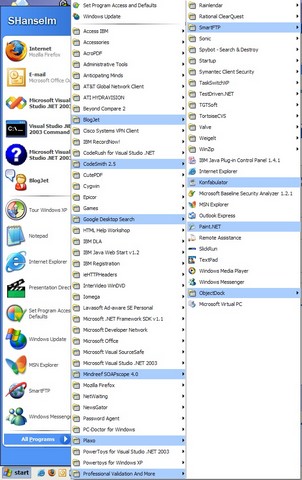Missing Operating System - Learn from me, backup your hard drives THIS YEAR!
 Gasp. I returned from lunch only to find my computer in the middle of a blue screen.
Gasp. I returned from lunch only to find my computer in the middle of a blue screen.
Let me tell you folks, this is the computerguy-equivalent of finding your wife in bed with your brother. All the same emotions run through your mind (I would imagine):
- Oh, you dirty bitch.
- How could you do this to me?
- And now, during the holidays!?
I rebooted, and was welcomed by and immediately disconcerting clank and the ominous evil that followed:
Missing Operating System
Seriously people, drink that in. Really, wallow in the pitiful blackness that is the failed BIOS POST, accompanied by the omnipresent but almost subconcious whispering "f*ck you...f*ck you..." clack of what remained of your drive heads.
Here's the catch. I backed it all up (for the first time in months) THE DAY BEFORE. I backed it all up (the data) to my Iomega REV Drive.
I'm digging this drive more and more. Some poo-poo'ed the purchase, saying it was too expensive, and instead opting for other mini-harddrives (USB or Firewire) to copy their data to. I prefer a removable solution, one that I can put in a safety deposit box or fire safe.
Anyway, I'm about 40% done installing my programs as you can see by my Start Menu. I'll know I'm done when the Start Menu completely fills my 1400x1050 screen.
Back up people. Do it today. Do it now.
About Scott
Scott Hanselman is a former professor, former Chief Architect in finance, now speaker, consultant, father, diabetic, and Microsoft employee. He is a failed stand-up comic, a cornrower, and a book author.
About Newsletter
